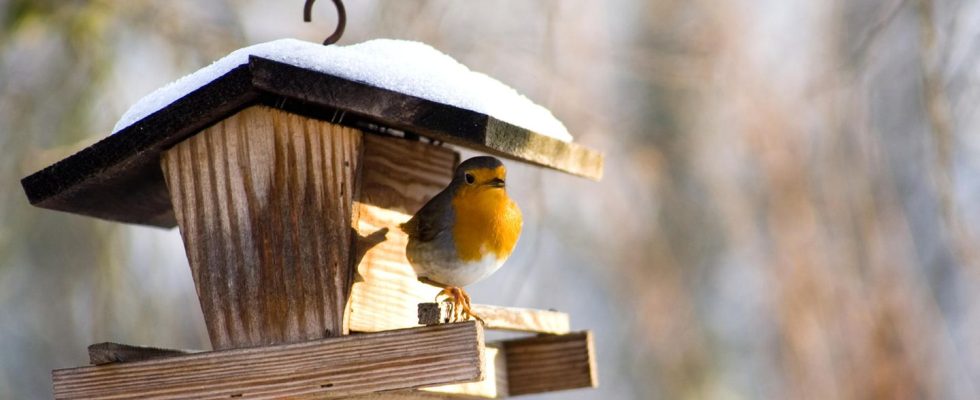Bird feeder
Feeding and watching wild birds: This is what you need to know about feeding them
Bird feeders are best for feeding wild birds
© FocusEye/Getty Images
Enthusiastic hobby ornithologists have the opportunity to observe wild birds up close in winter, as winter feeding can support various bird species. You should keep this in mind.
The temperatures are steadily falling and outside the autumn leaves are giving way to bare trees. Wild birds find less food in nature in winter and are therefore happy to receive support. Not only do the wild birds get their money’s worth, but so do their observers. This makes it easy to observe birds up close. According to the Nature Conservation Association Nabu, wild birds are typically fed in winter from November to the end of February. We will explain to you what you should pay attention to when feeding.
Bird feeding station instead of bird house
Especially in frost and snow, it becomes more difficult for wild birds to get food naturally. So feeding by humans is a good idea at this time. The hygiene of the feeding area should have the highest priority. In traditional birdhouses, food and bird droppings can easily mix together. This can lead to illness. That’s why Nabu recommends practical ones Feeder. In this way you can limit the transmission and spread of pathogens and the food lasts longer. If you still use classic birdhouses, the Nature Conservation Association recommends cleaning them regularly with hot water and only adding a little food every day.
The right place
Feeders must be able to withstand wind, snow and rain. Therefore, make sure that the dispenser is securely attached and that the food cannot get soaked. Otherwise the food could freeze or even spoil.
Place feeders in a safe location in the garden. This prevents cats from sneaking up unnoticed and disturbing the birds. This also makes it easier for you to observe the wild birds. However, the feeding station should provide nearby cover such as bushes and trees. Then the birds feel more comfortable and have opportunities to escape. However, proximity to glass panes should be avoided as these can become deadly traps for the birds. If the conditions do not allow it, simply put stickers on dangerous windows. This can be done on balconies Bird feeder be attached directly to the window pane, as short approach paths make a collision less dangerous.
Food for wild birds
Sunflower seeds are best suited as basic food as many species of birds like to eat it. That also applies to unsalted peanut fragments. Tits, finches and sparrows are classic grain feeders. They are suitable Feed mixeswhich additionally contain other seeds of different sizes. tits They also love mixtures of fat and seeds, known as suet balls. When purchasing suet balls, make sure that you Fat balls without net use. Otherwise, birds could get their legs caught in it and get injured.
Other birds like Robin, dunnock, blackbird, fieldfare or wren prefer soft foods such as raisins, fruit, oatmeal and bran. It is important to ensure that this food does not spoil. There are special floor feeders that are particularly suitable for this.
Source: Nabu
You might also be interested in:
This article contains so-called affiliate links. Further information are available here.

